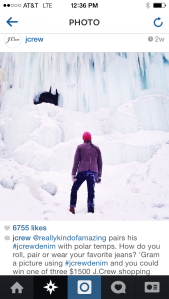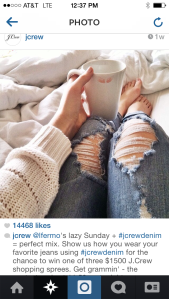Incorporating the new
The Internet and social media have completely changed people’s lifestyle. Their communication styles, hobbies, and information gathering are completely altered in comparison to their attitudes and habits ten years ago.
For business to be successful, they must keep up with these changes, not only with technology but also with the way that people interact, communicate, and search for information. In David Meerman Scott’s Book The New Rules of Marketing & PR, he emphasizes the importance of putting meaningful content online, not pushing information in a one-way relationship format.
“If your organization isn’t present and engaged in the places and at the times that your buyers are, then you’re losing out on potential business-no mater how successful your off-line marketing program is.” – Scott, pg. 5 of The New Rules of Marketing & PR
Similar to other blog posts and literature we have examined in my integrated marketing communications class this semester, Scott believes that emphasis should be placed on creating and maintaing relationships with current and potential customers. These relationships ultimately build brand loyalty, brand awareness, and ultimately increase sales. It is not how much information you put out there, but the outlet you choose and the meaning behind it the content.
Not only will companies be maintaing and stimulating relationships with current and potential customers, but the company will have the opportunity to use this customer feedback they are receiving from these outlets and incorporate it into future strategies and product design.
“You can’t just make decisions on what you think your products do; you need to make decisions on the perceptions of what people are actually doing with your products.” – Scott, pg. 65
A Scott lesson: People are eager to share when given valuable content
Ocean Frontiers Ltd. of the Cayman Islands started The Green Shorts Challenge, where scuba divers who visit each of the 55 dive sites within the East End dive zone in Grand Cayman are given special recognition including the coveted green ocean frontiers uniform shorts, a plaque, a gold medal, an achievement party, and recognition on the Ocean Frontiers’ Facebook page.
Referred to as the “scuba diving hall of fame,” followers become addicted to the challenge and record their journey in a journal where they can draw pictures of each of the 55 sites. The sense of accomplishment leads to countless posts on their social media outlets, exposing the company endlessly.
“You couldn’t ask for a more loyal and dedicated customer base than what we’re building. From whatever social media platform they communicate, if someone wants to go diving in the Caribbean, our customers are going to recommend us. There’s a human element that can be brought in with Facebook. You humanize what your business does.”– Steve Broadbelt, Managing director of Oceans Frontier Ltd.
Here, Scott has highlighted the importance of giving our viewers valuable content. With the amount of information available on the web, people are not going to share everything. By humanizing business and giving customers an opportunity to interact with the brad and be recognized, you create value.
Lucky Community: a new strategy at increasing magazine viewership

Screen shot of the Lucky Community page
Recognizing the overwhelming amount of avid fashion bloggers and enthusiasts, Lucky has launched a platform called “Lucky Community” where blogger “contributors” can sign up and contribute their posts. The posts are collected on a page that is displayed and updated similarly to Pinterest, giving fashionistas and Lucky fans more fashion beyond their print magazine.
 Anyone can sign up to be a Lucky Contributor, but the editor of Lucky Contributor decides which content will be streamed on the main page. After submitting your application online, the editor reviews your writing and you are given your first “Lucky badge” that you can put on your blog.
Anyone can sign up to be a Lucky Contributor, but the editor of Lucky Contributor decides which content will be streamed on the main page. After submitting your application online, the editor reviews your writing and you are given your first “Lucky badge” that you can put on your blog.
Writers are rewarded with different badges for the number of views or community votes that their posts generate. More selective badges include “Editor’s Favorite” or “Style Collective” and are given different perks, including the ability to upload content without editor moderation and possibility of interviewing with Lucky editors.
The Lucky Contributor concept and The Green Shorts Challenge are mirror images of a pursuit of customer engagement and value creation for different types of people. Fashionistas are awarded for posting their work with badges that not only give them credit and 15 seconds of fame, but also a glimpse of writing for a prestigious fashion magazine- a coveted position that not many people can get. With the diminishing print publications, it is vital for magazines like Lucky to continue to innovate ways to keep people engaged and excited about their brand.
Customer engagement and creating valuable content are only pieces to the puzzle, but exemplify the importance of company’s incorporating inbound marketing strategies into their current plans.
This post is a part of a series of posts for Integrated Marketing Communications class that explores strategies of integrated marketing communications and recognizes strong and weak branding strategies today.
























